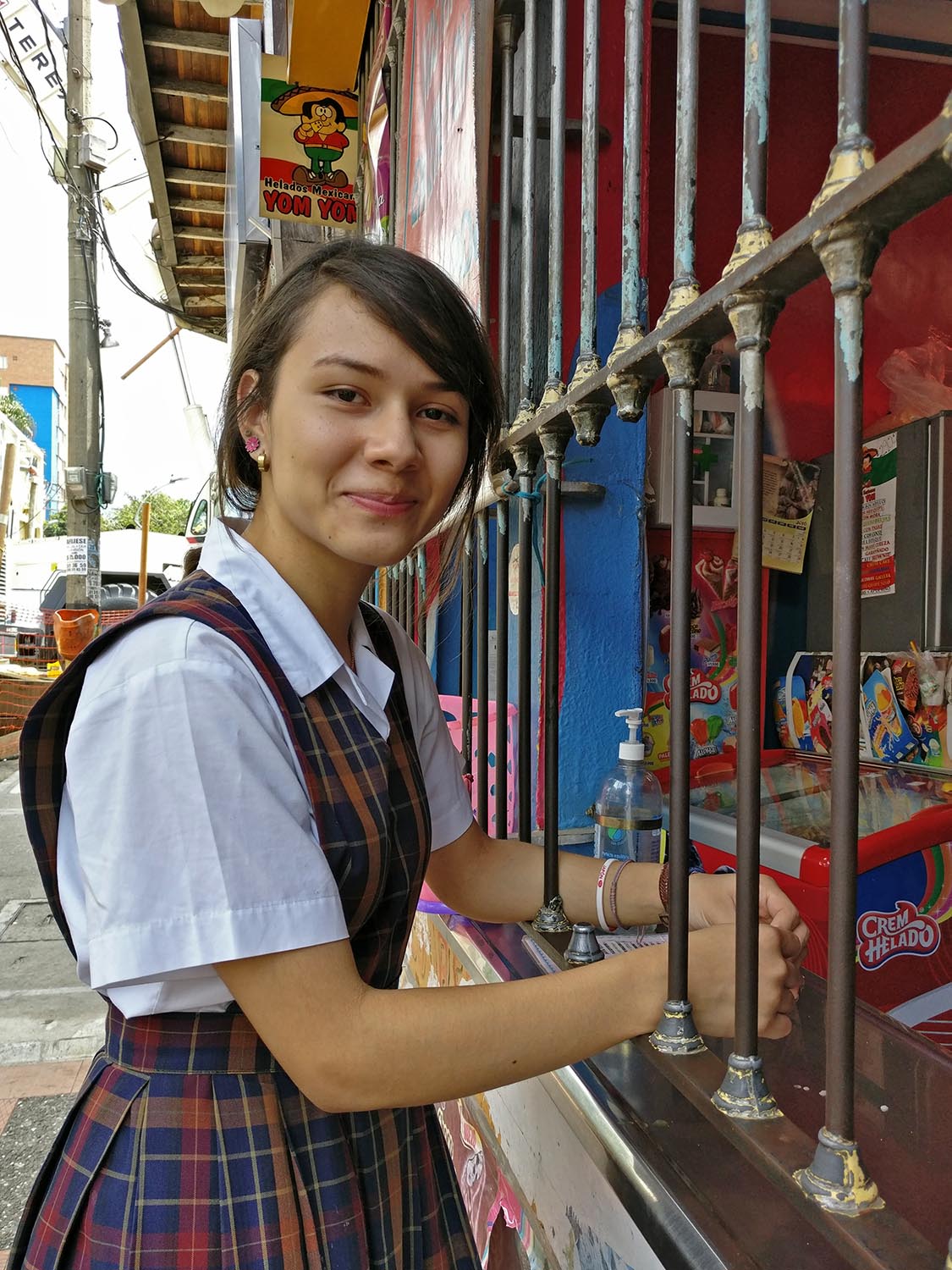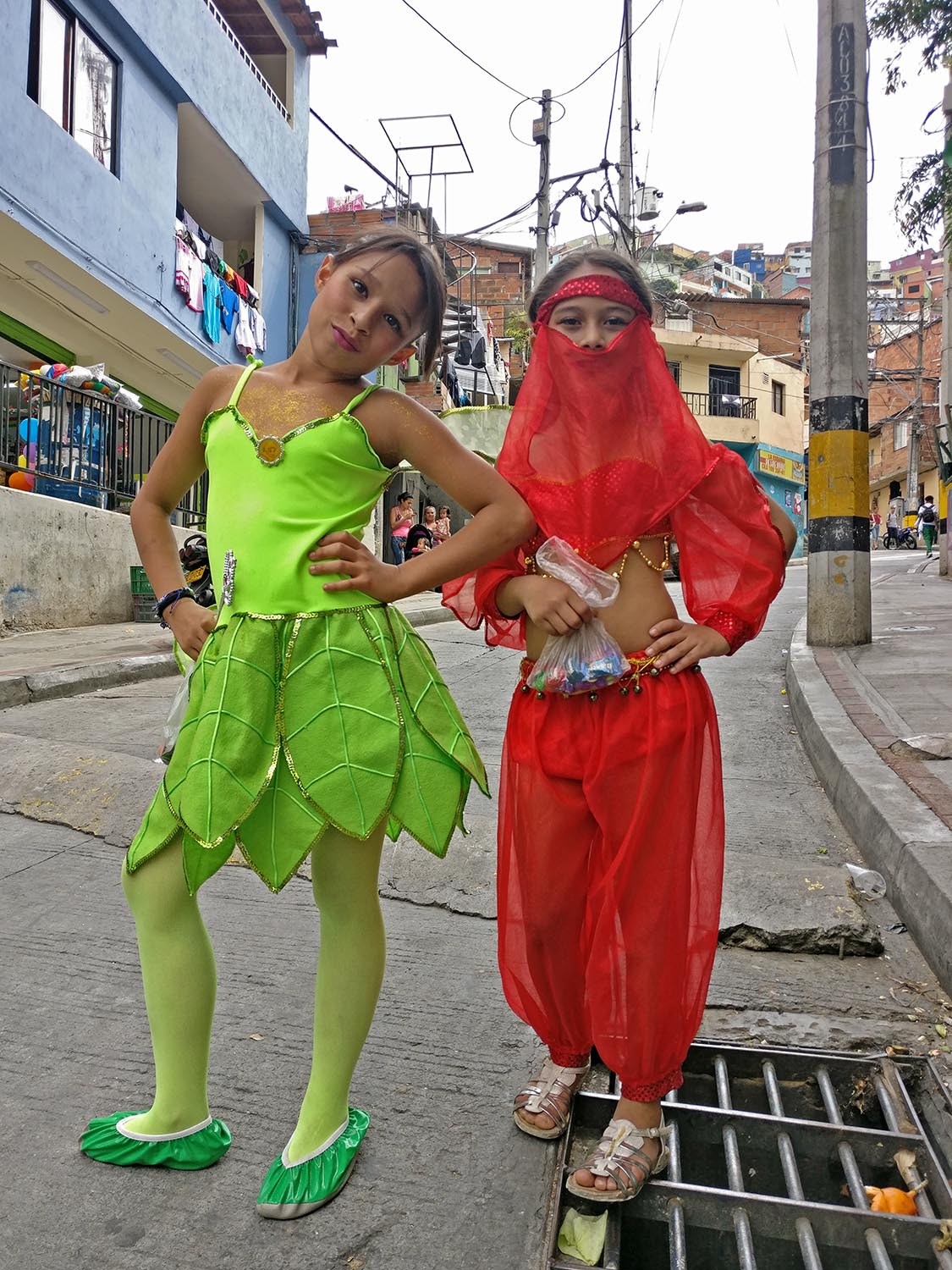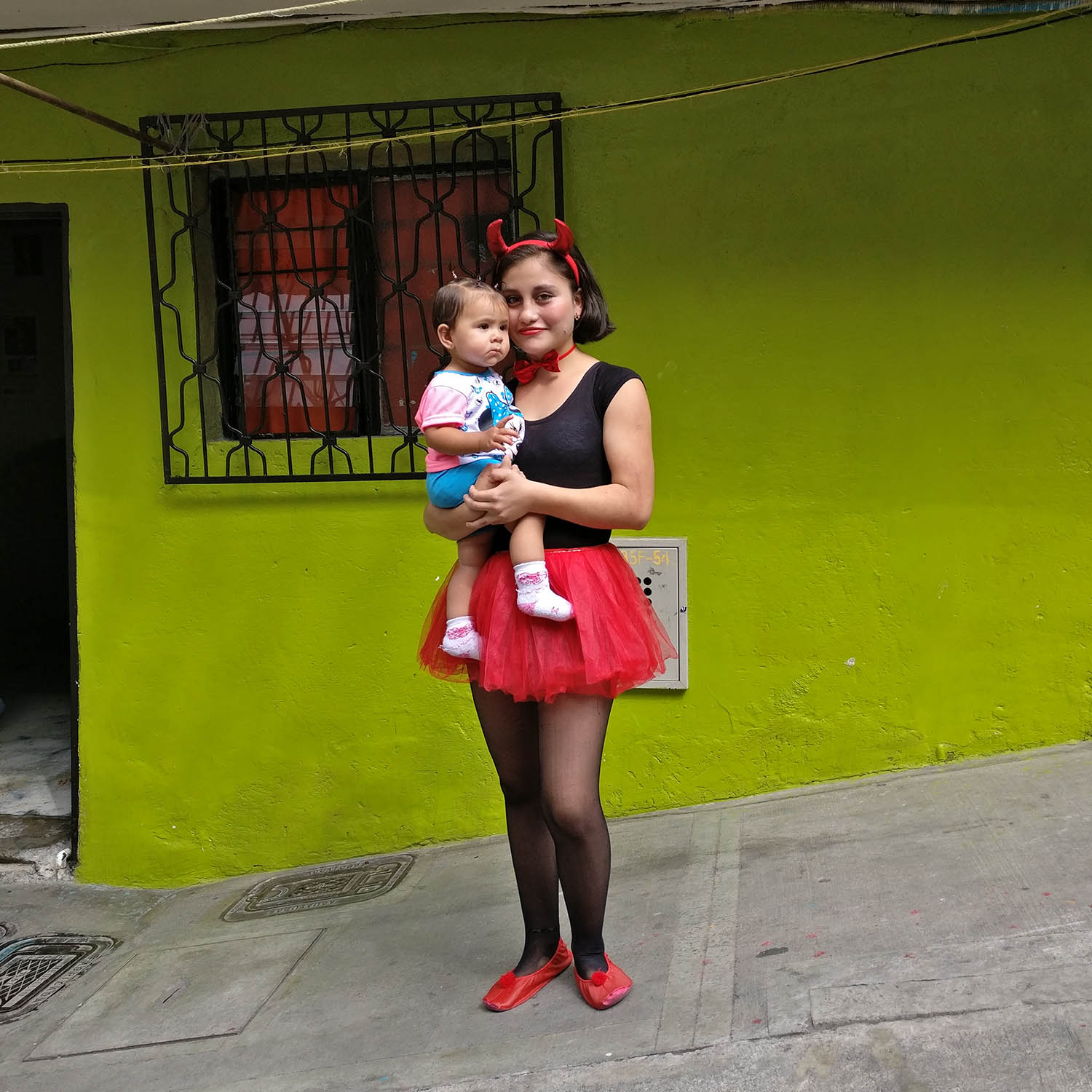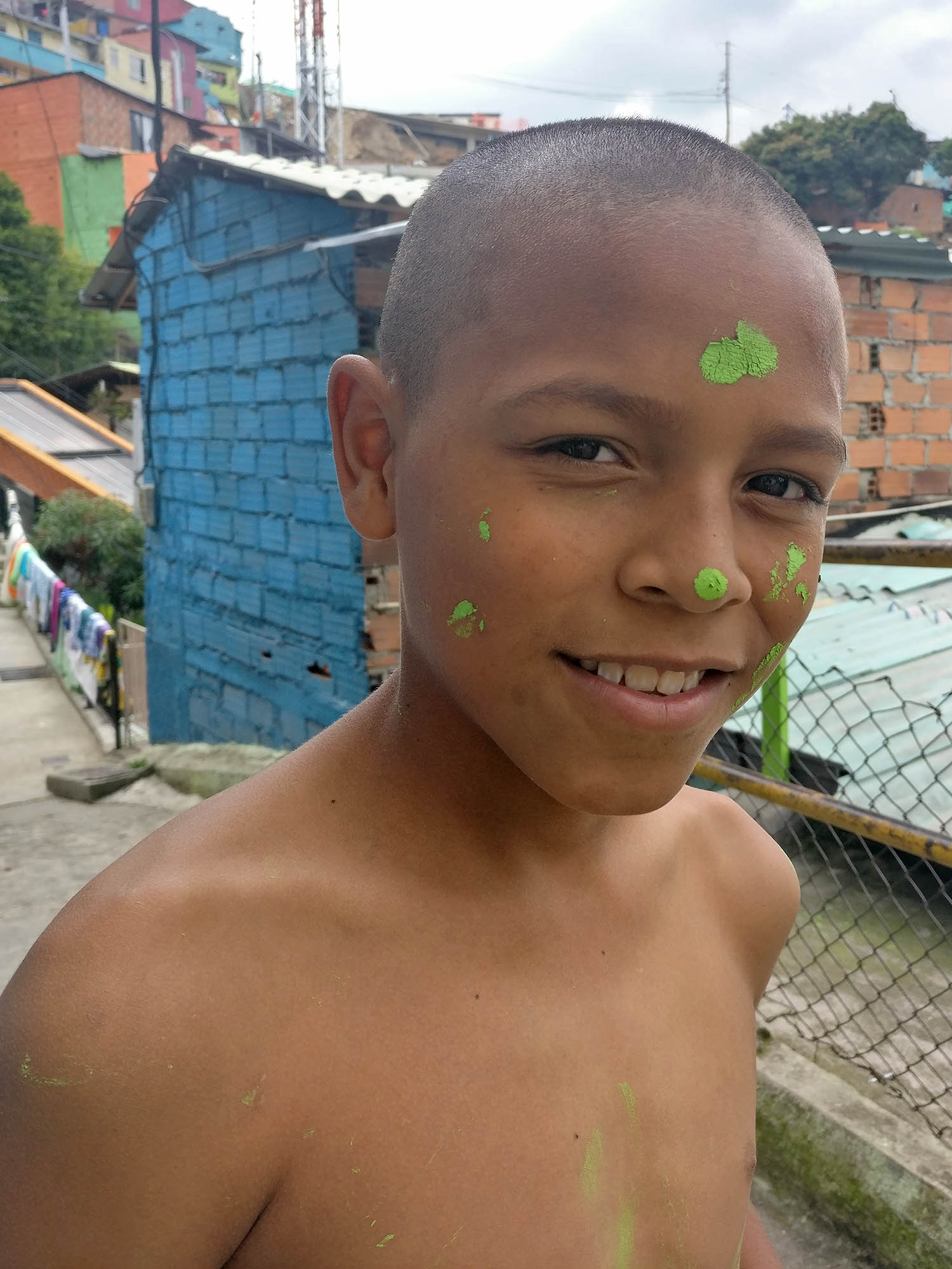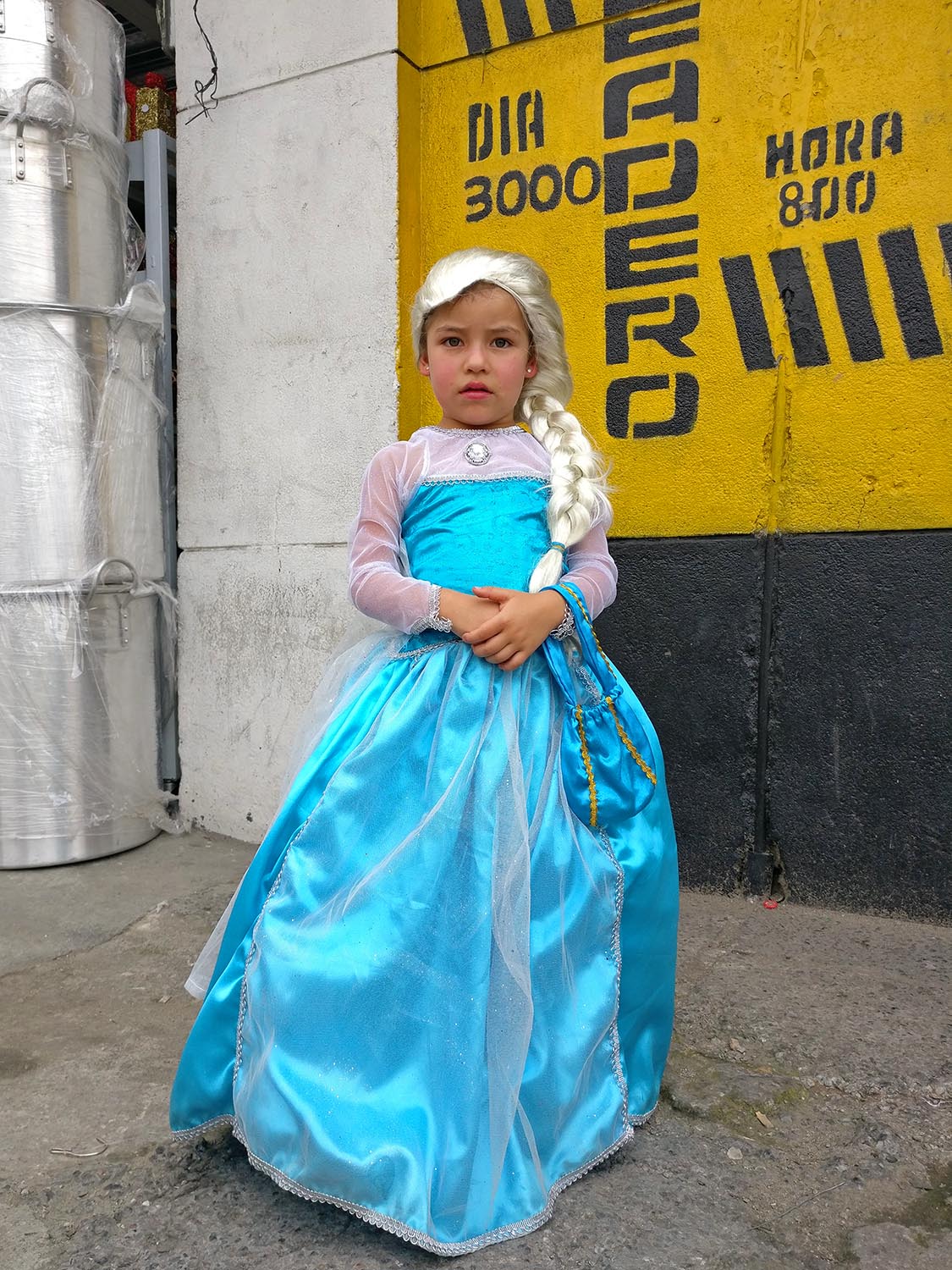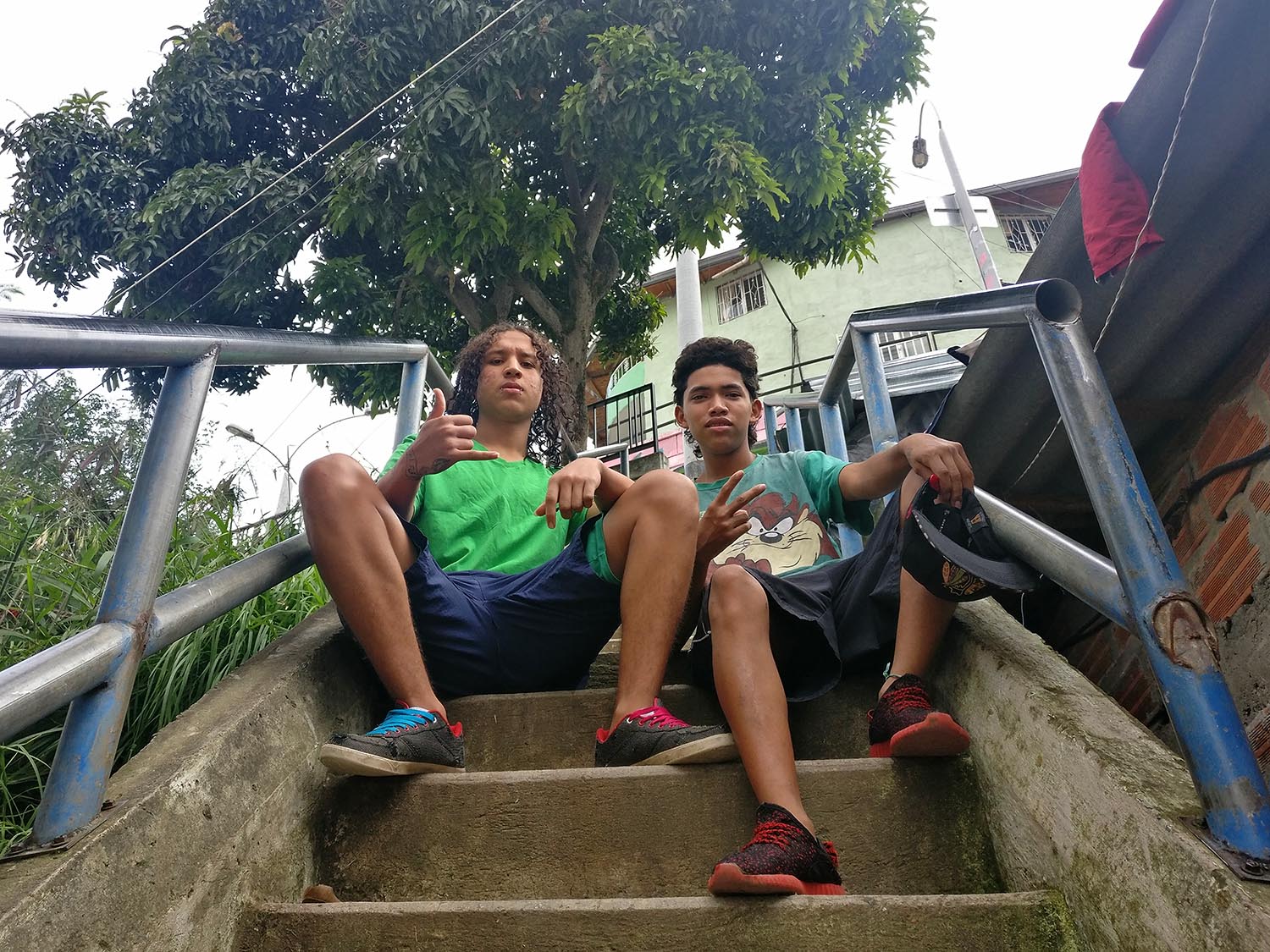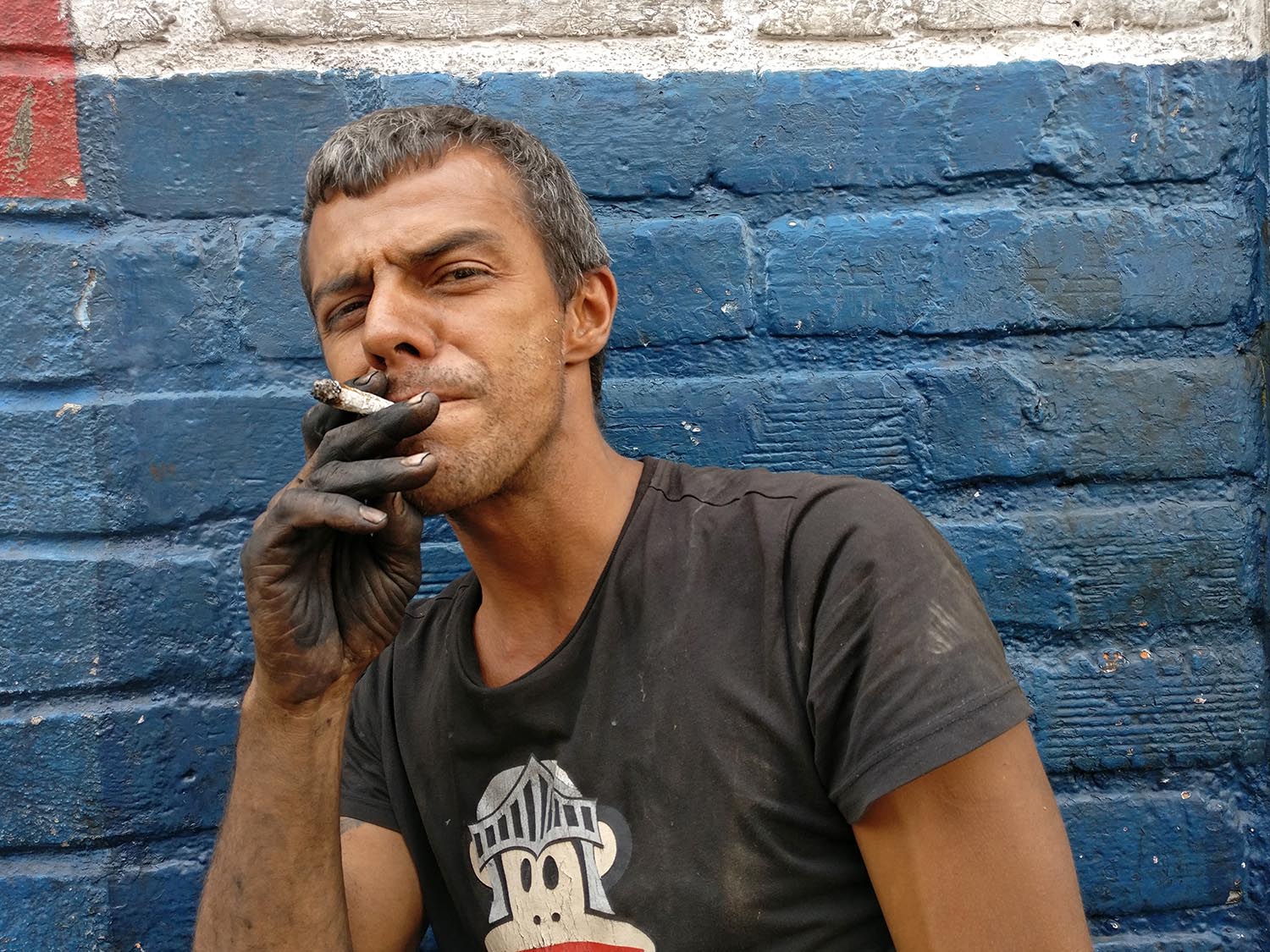
More than twenty years after the death of Pablo Escobar, Colombia's notorious drug-lord, the city of Medellín still seems inextricably tied to its hyper-violent past. In the 80's and 90's, the world's cocaine-producing capital that kept nostrils across the globe numb with white powder, was very, very red with blood spilled in wars between Escobar and his rivals in the city of Cali as well as the government. The Netflix TV series NARCOS does a fine job of reminding those that might need a refresher course in what exactly went down.
HUMAGNA spoke to world-renowned visual-artist/photographer Kevin Abosch about his recent trip to Medellín and how he approaches photography as a tourist. Surprisingly, his camera of choice is the one in his phone.
HUMAGNA: You're known best for your photographic portraits of people and objects primarily in a controlled studio setting. What's it like for you to shoot in the real world, so to speak?
ABOSCH: It's liberating. First of all, I love natural light. I also like being outside and not being in control of all the elements that go into an image. There is an excitement when everything is constantly moving.
HUMAGNA: When you travel do you take a lot of photos, for yourself?
ABOSCH: I tend to only photograph things I know I will want to see again or show someone else. If it's something you might see on a postcard or on the website of a tourism board, I probably am not interested. Even as a tourist, I am attracted to faces and objects that speak to our sense of identity.
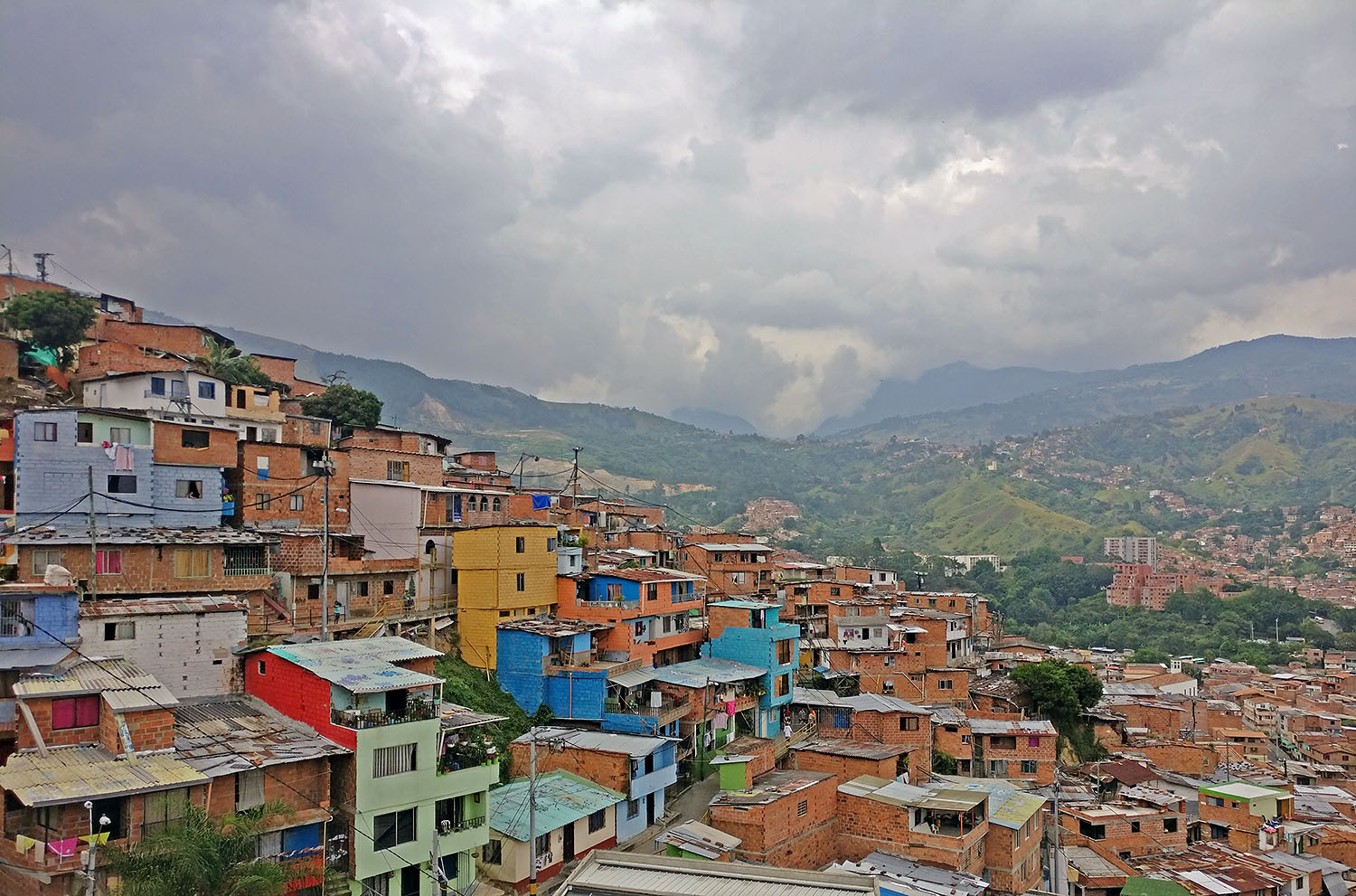

HUMAGNA: What brought you to Medellín?
ABOSCH: I was in Bogotá presenting my installation "Impossible Promises" at the Museum of Modern Art when my friend and curator Ana Sokoloff asked me if I'd like to spend a few days in Medellín. I'd heard so many great things about the people and the food there, so it was easy to accept the invitation.
HUMAGNA:The photographic portraits you made in Medellín, they look like people you just went up to on the street. Can you describe your approach? Was there a goal in mind?
ABOSCH: The goal is always the same for me -- to learn something about who we are through the people or things I shoot. Many of the people I photographed were young enough to have grown up in a post-Escobar Medellín. This is not to say that there are no drugs today or an absence of violence in Medellín, but by all accounts, things are considerably safer. I wanted to see the nature of today's Medellín in the faces of its citizens. I happened to be there on Halloween which meant some people were in costume. I walked up to people and tried to be as non-threatening as possible. They have no idea who I am. I'm tall and realize that this alone can come across as imposing, so I do my best do mitigate it with a goofy smile and in nervous, broken, but polite Spanish I just ask if I can take a photo of them. I point to my mobile phone and say "dos secundos," two-seconds. Most people oblige.
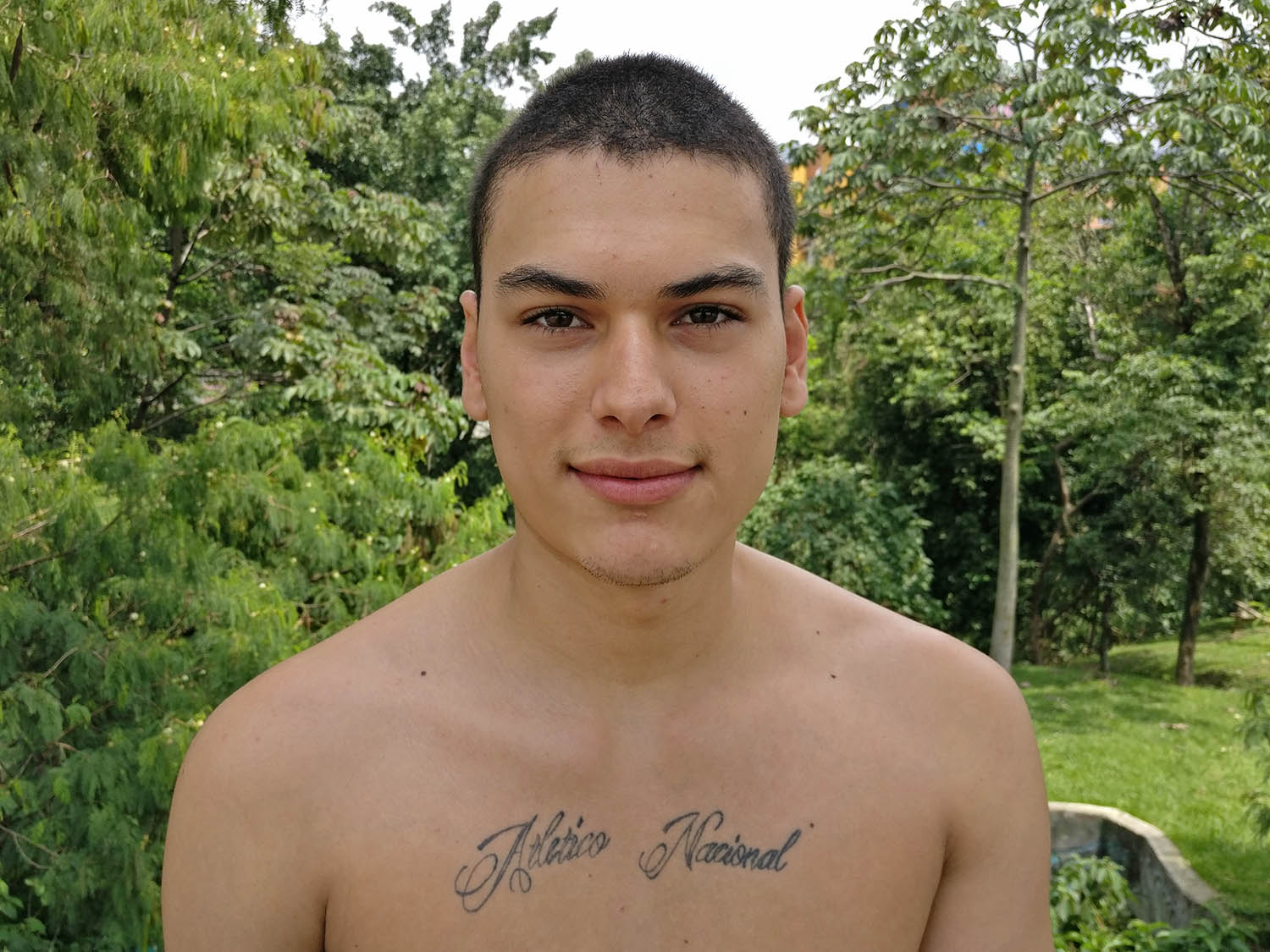
HUMAGNA: You shot all of these photos on a mobile phone?
ABOSCH: I did.
HUMAGNA: I think a lot of people would ask why shoot on your phone when you probably own the best cameras money can buy and certainly know how to use them... So, why?
ABOSCH: Probably for the same reason that most people turn to their phones as their primary photographic tool... convenience. But if I weren't happy with the resultant images, then I wouldn't use my phone as much as I do.
HUMAGNA: What type of phone do you have and do you use any special accessories?
ABOSCH: I have a OnePlus 3, an Android phone. No accessories, not even a case. Again, if I weren't happy with the image quality, which of course is subjective, I would have shot the Medellín stuff with a small, full frame camera. Cameras and mobile devices have personalities. We have relationships with our machines. Sometimes they work out and sometimes they don't. You know when a relationship feels right. For me, the way a phone feels in my hand, how responsive it is to my needs, the feel of the images... These are the elements that either come together or they don't. Perfection in this regard is elusive, but today I am intimately involved with my OnePlus phone.
HUMAGNA: Are we going to see mobile phones completely supplant traditional cameras?
ABOSCH: That's the billion-dollar question for the big camera companies. Certainly the cameras available on mobile devices today are considerably better than just a couple years ago. If I showed you back then a photo taken on my OnePlus 3 today, you'd assume it was taken on a $2000 camera. I like not having to carry a heavy camera with me and at the rate these devices are improving and adding traditionally professional features, I believe we'll see traditional camera sales continue to contract. At the end of the day only one thing should matter for the photographer -- Do they have the tool to make the image they want to make?
HUMAGNA: Do you think the people you approach on the street are less threatened by someone with a phone, than a traditional camera?
ABOSCH: This is something I've certainly thought about. On the one hand, if you wield a big, fancy camera perhaps people will shy away from what might seem like an interaction with a professional. On the other hand, this might be attractive for some. With a mobile phone, today at least, you would probably not be mistaken for a serious photographer, which again may work for or against you depending on the potential subject. The mobile phone is a powerful tool and most people are well aware that a few seconds after an image or video is captured on a phone it can be all over the world. The thought of this for some could be troubling. So, the not very satisfying answer to your question is, I don't know.
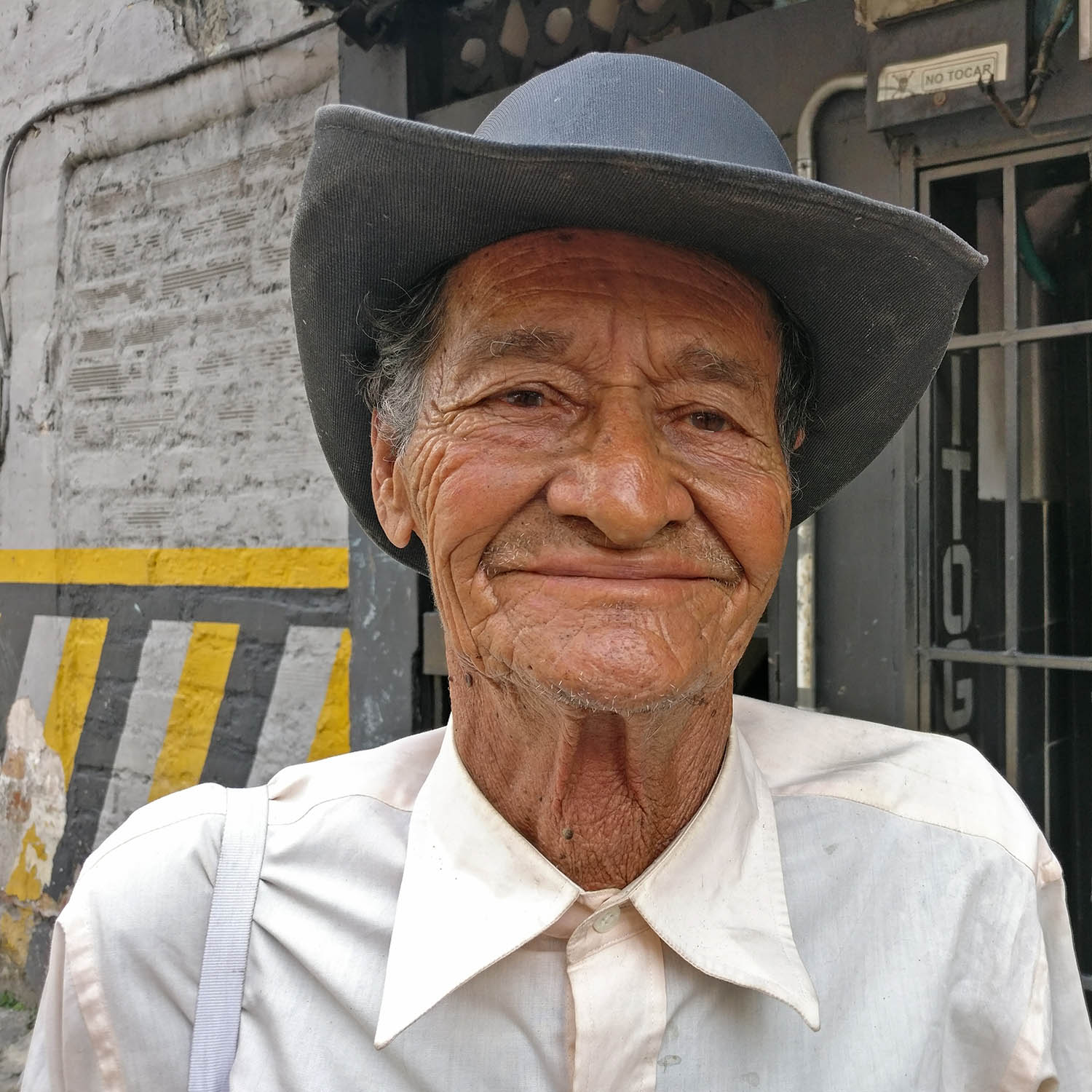
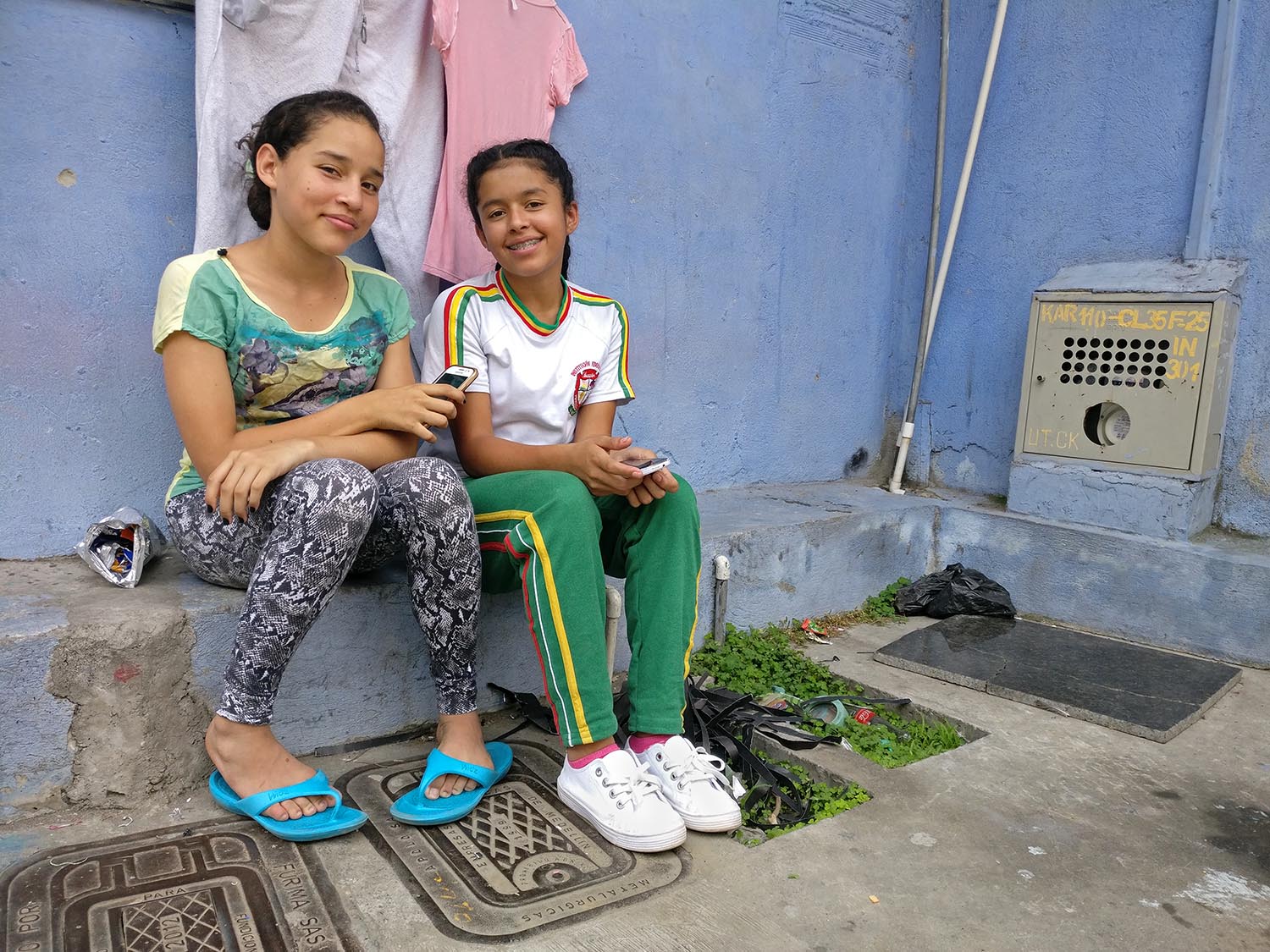
HUMAGNA: How many people did you photograph in Medellín?
ABOSCH: Maybe fifty.
HUMAGNA: So, this series of photographs... Street portraits of people in Medellín... How does it fit in with your work... the stuff in museums, the studio portraits of Nobel laureates, the famous "Potato #345" that sold for a million euros?
ABOSCH: These are my personal travel photos. They are not made with the same intention as the work I show publicly. I take these photos because if I don't, my life falls apart. The process is just as important for me as the image. It's essential therapy. Yes, the same can be said for all my work, but if it's been said -- and it has -- that I try not to impose myself on the work, I may be even less present with these.

